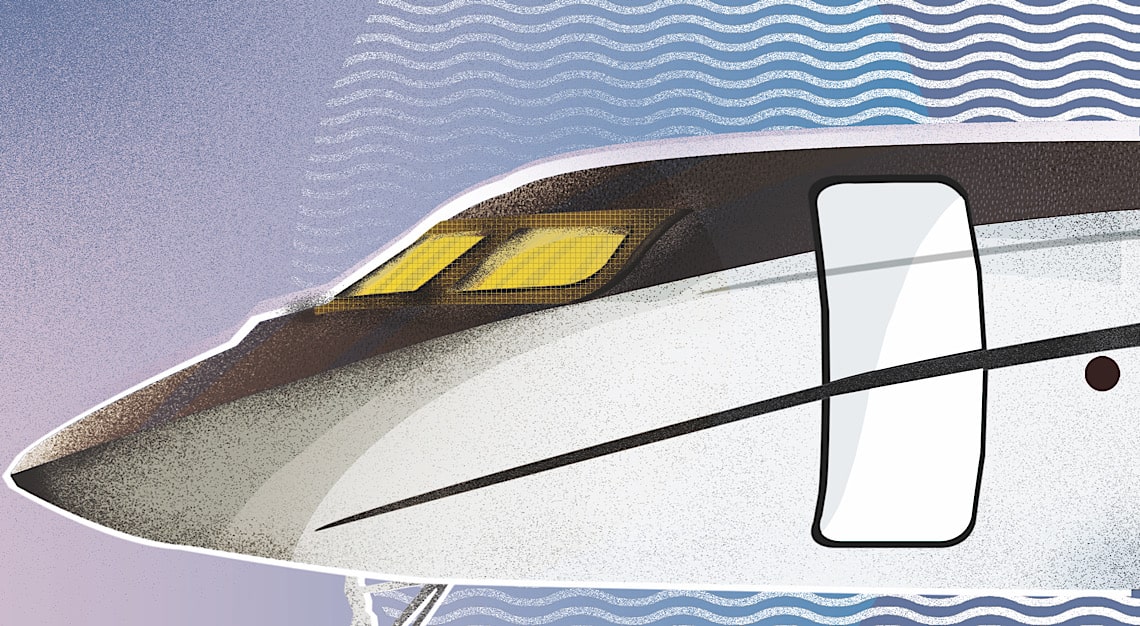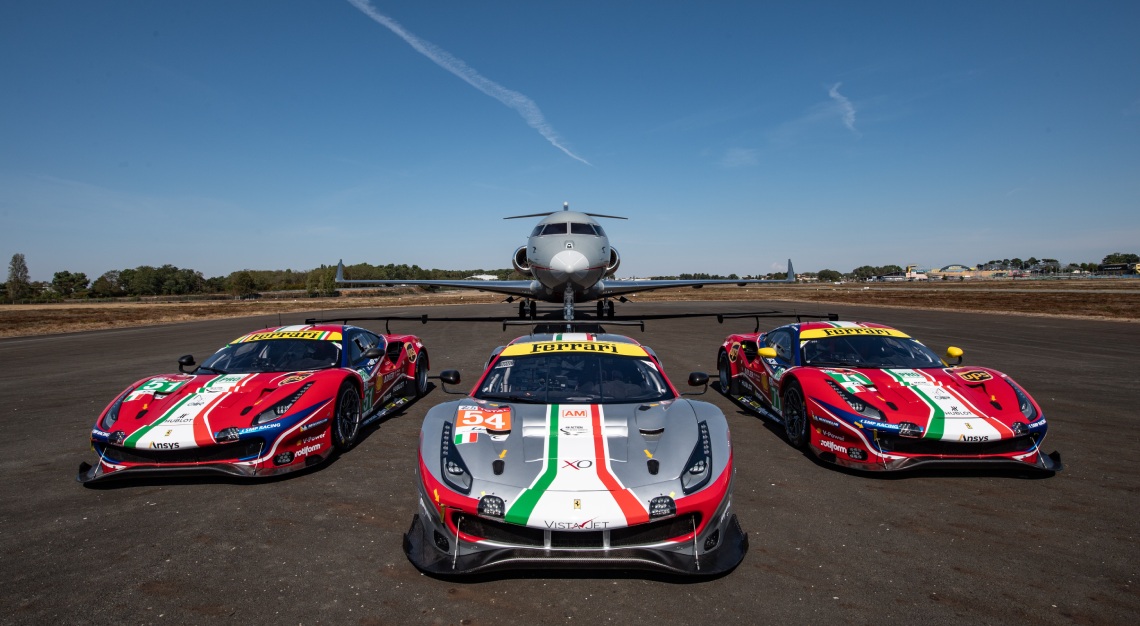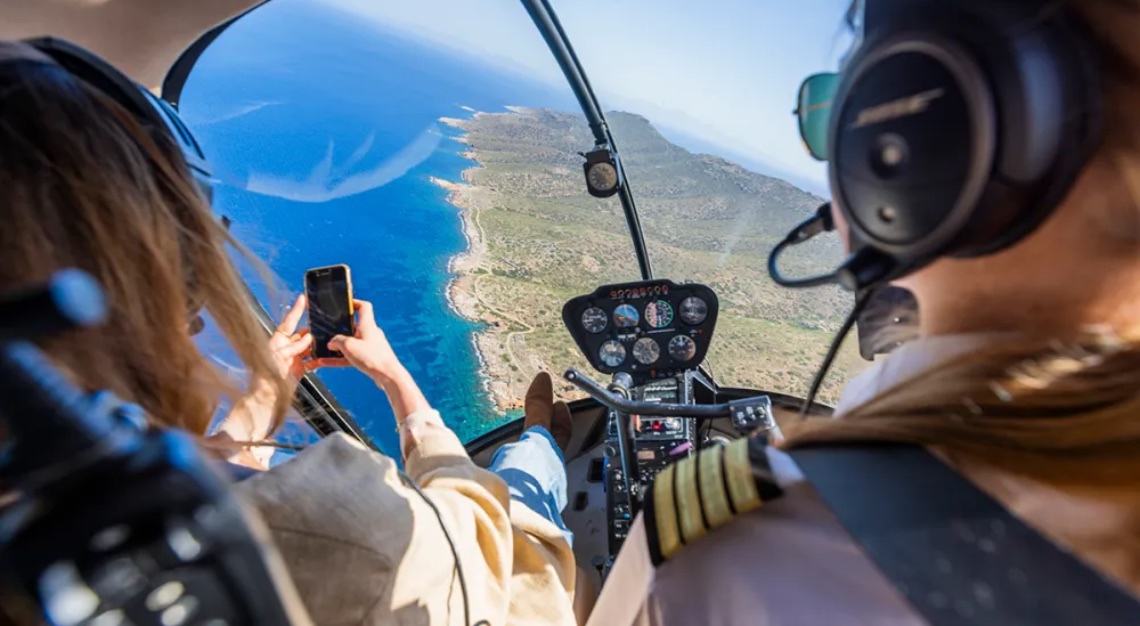JSX took 30 lucky spectators into the sky for a once-in-a-lifetime eclipse viewing experience
I’m 10,668 metres in the air, a cocktail in my right hand and the solar eclipse to my left.
According to Bill Gregory, our pilot and a former NASA astronaut, only one in every 10,000 people will see a total solar eclipse in their life. I’m not sure exactly how many will get to see it from this vantage point, but it’s got to be far fewer than that.
I’m here thanks to JSX, which has taken 30 people up above the clouds in Dallas to chase the total solar eclipse as it passes over the United States. On board the public charter air carrier’s Embraer 145, we all get a window seat to watch the action unfold, along with thematic drinks and space-inspired snacks like a freeze-dried vanilla ice-cream sandwich. Besides the little detail that we’re witnessing a once-in-a-lifetime event, the service and experience is much like that on any other JSX flight—which is to say attentive and luxe, respectively.
“It’s going to be an ordinary JSX flight except for the fact that we’re not going to go anywhere,” Alex Wilcox, the company’s CEO, tells us prior to the flight. “We’re gonna see physics in a way that’s so visceral… To have that moment where your mind opens up, expands, and you realise that there’s much more to the world than just what’s in your immediate face all day long.”

As we head northeast toward Missouri and Kentucky, Gregory explains to me and my fellow sun-gazers that what we’re about to see is the new moon positioning itself precisely between Earth and the sun. Texas was expected to get a whopping four minutes and 40 seconds of totality (the max possible is just seven and a half minutes), but the eclipse’s path would continue through the U.S. all the way to Maine and Canada. During that total eclipse of the sun, the sky darkens and the temperature can drop a full 20 degrees.
From our vantage point—and thanks to the helpfully provided solar-eclipse glasses—we can see the partial eclipse begin, with the moon starting to take a bite out of our closest star. Soaring over the clouds, the cabin begins to darken, and outside it looks like the sun is setting, even though it’s just about 2 pm local time. This was perhaps the most striking part of the experience: seeing what seemed like sunrise and sunset in the middle of the afternoon. Peering up and out of the window, you could glimpse the sun disappearing, and just before totality I saw the moon shining with the sun’s corona illuminating its outline. Unfortunately, the full totality was a bit difficult to see from the plane—despite the 45-degree banks provided by Gregory and his co-pilot, the former F-14 Navy pilot Chris Swilley—and many of us got on our hands and knees in an attempt to peer out of the uppermost part of the window.
Even then, the excitement among the passengers was palpable, whether it was the students from a local STEM program or the older men with their pro-grade cameras. And that’s exactly why Wilcox and his team decided to host the experience.
“There’s not a lot that unifies us anymore, so one thing we can all get excited about no matter what your preferences or politics or anything else is, like, holy cow, we’re still creatures on this big globe, and there’s another globe up there,” Wilcox said. “If you can look out that window and not be mesmerised by the whole thing, I think that’s unusual.”
Given that the next total solar eclipse isn’t slated to happen for another 20 years or so in the United States—and not until 2317 in Dallas—JSX doesn’t have any immediate plans to replicate its path-of-totality flight. (“We’re good planners, but not that far ahead,” Wilcox said.) If you opt to travel for the next one, though, it’s worth realizing that you may not have a perfect view of totality—which is true whether you’re on the ground or thousands of feet up in the air. But that fact itself is pretty apt. The eclipse is a fleeting moment, one you’re lucky to get to experience even just once in your life, and a lot of factors have to align—quite literally—for it to all come together. Best to savour the moment, whatever little sliver of it you come across.
This story was first published on Robb Report USA. Featured photo by Keegan Barber/NASA via Getty Images






